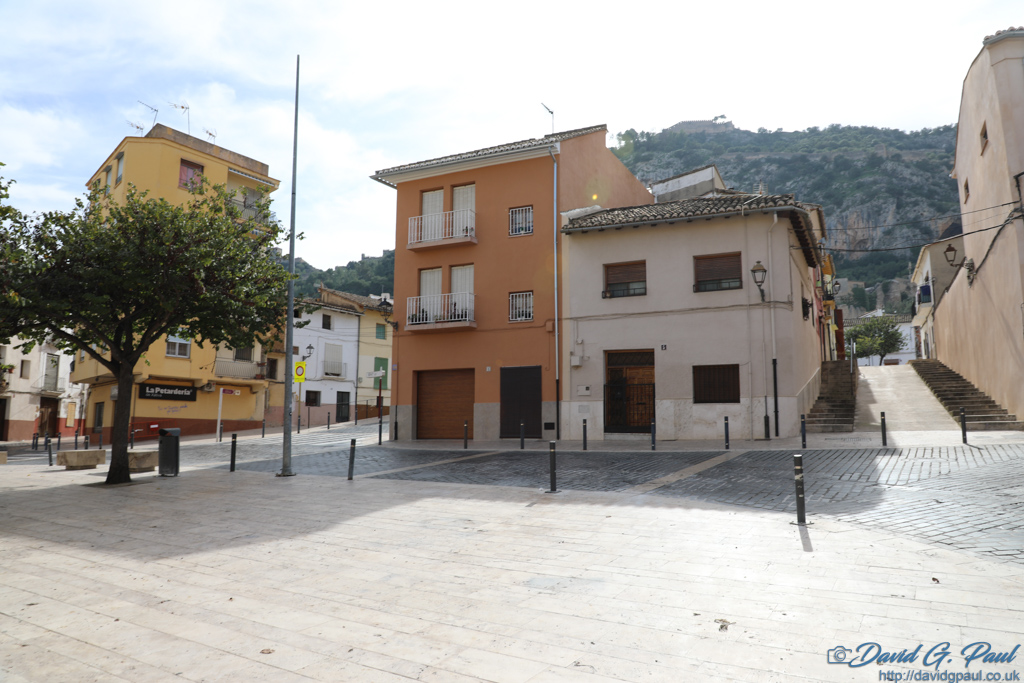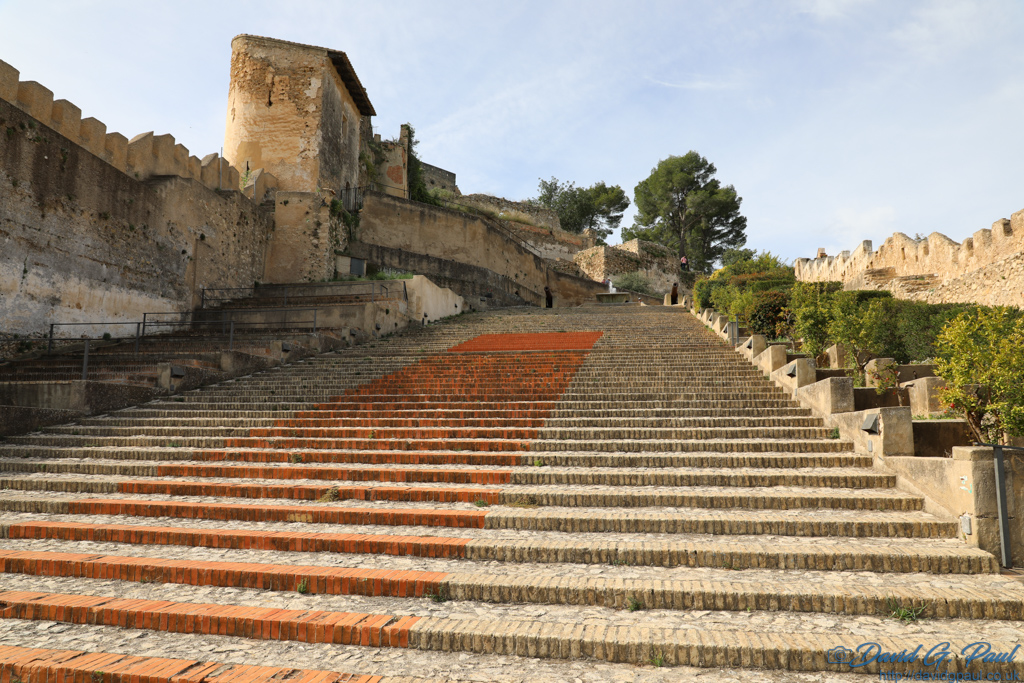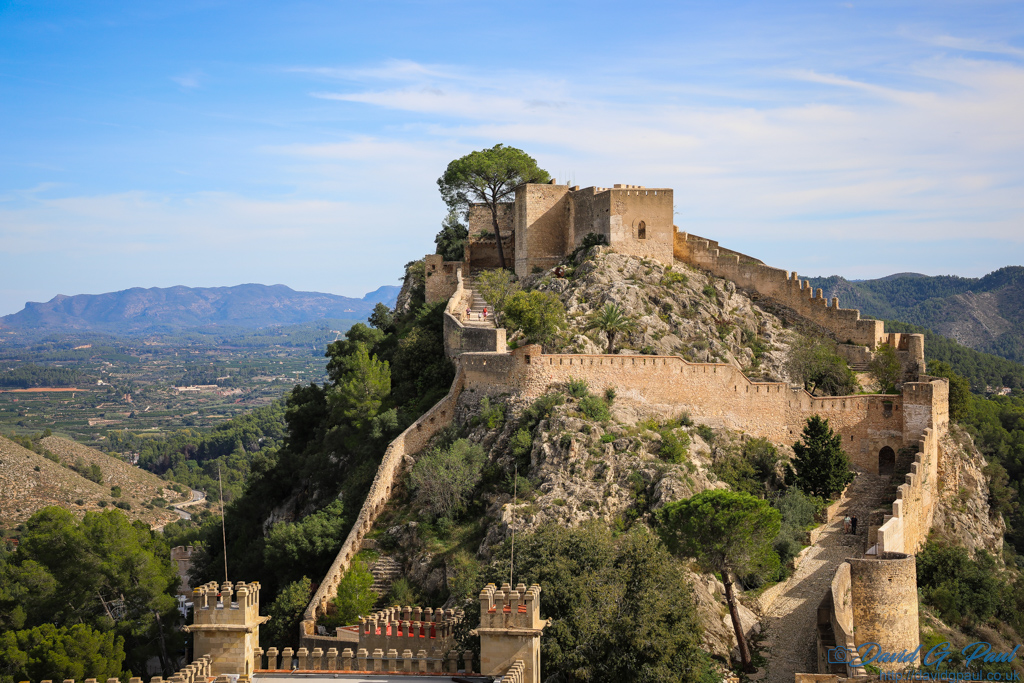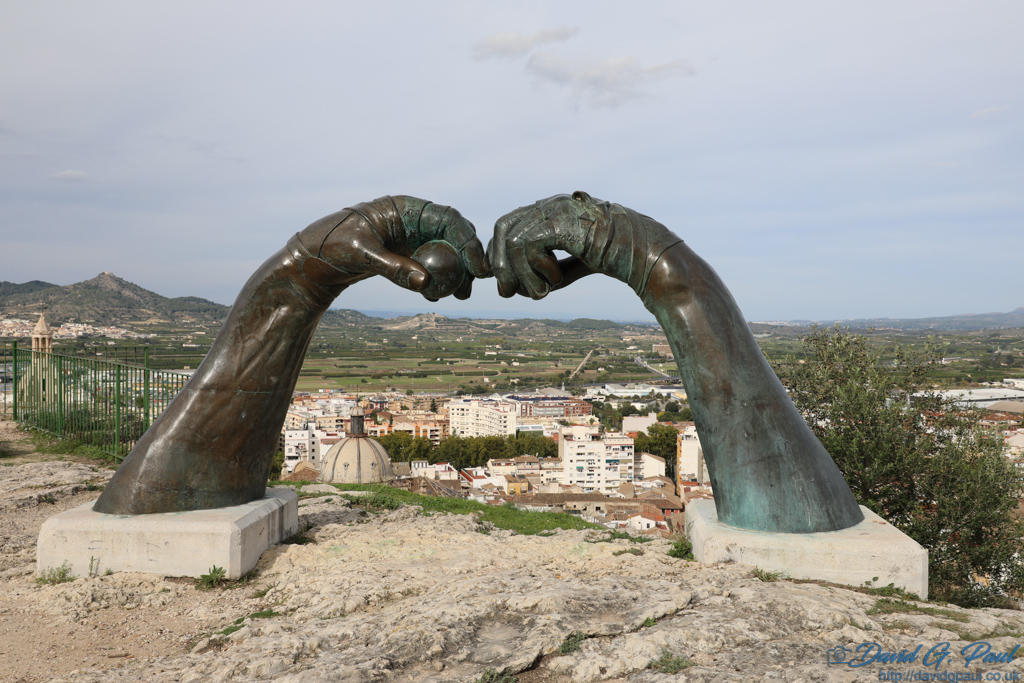Our final full day In Valencia had arrived. There were a few things we'd considered for today. My first idea had been a hike that involved a viaduct, but after all the walking we'd done so far I thought that maybe Carmen wouldn't be too keen on that. It was also very weather dependent. I'd also thought about suggesting some of the places we'd passed on the way to Peñíscola, but thought that might be too boring.
Last night I'd taken another look at Xàtiva Castle and found it would likely take up to an hour of walking from the train station to reach the castle. I could see on the map that there were switchbacks so it was certainly uphill, so thought this would be out of the question. I had no idea what to suggest we do now. I found a blog that suggested the walk was actually closer to forty-five minutes, and we decided that we'd give it a go. So, after a relaxed start to the day we left out just before 10:00 on our way to the Valencia North Station to take a Renfe C2 train.
We made it for the 10:35 train in plenty of time, and for the next hour it travelled south through the Valencian province. The city fell away to the countryside and then towns, more orange trees, and eventually we could see mountains getting closer. When we could see a castle atop one of them, we knew we had arrived.
Xàtiva is a derivation of the pre-Roman, Iberian name for the settlement: Saiti, and was well known in Roman times for its linen. At the time it was located atop the hill, where the castle now stands. Very little evidence of Roman structures remains due to the stones from ruins having been reused over the years in the construction of other buildings.
The Moors conquered the town, renaming it to madīnat Šāṭiba, and turned it into a fortified stronghold. They brought with them the technology for making paper. Eventually it became the capital of a small Muslim state.
When El Cid won the Battle of Cuarte, the survivors sought refuge in this stronghold. When the Christian forces retook the city, it eventually became the second most important city in the Kingdom of Valencia, and the (now forcibly Christian) Moors were expelled from the town.
In time, it became home to the notorious Borgia family; who you may recognise as the source of Papal scandal. Then in 1707, under the orders of the King Philip V of Spain, from the French House of Bourbon, soldiers caused significant damage here during the War of Spanish succession. He then renamed it to San Felip, and it remained named as such for the next 104 years.
Today, the city of Xàtiva is well developed, but it’s a lot quieter than Valencia, at least at this time of year anyway. The castle is signposted from the train station so is clearly the most visited place here.

The route very quickly starts to go uphill, and passes a couple of squares. It then gets steeper, and you soon see the castle structure with the city walls far above. The gate was closed but it looked like this wasn’t the main entrance for the castle, and signposts lead away from it with two potential routes up.
We could then see a building ahead, and as we got closer we could hear a church organ being played inside. We had a look through the door of the Hermitage of Sant Feliu, and could see the usual altar and pews. Other than that it seemed very bare with the walls showing signs of having once been painted but were now mostly white. Further along the track are ruins from an old Islamic palace, and then the Hermitage of Saint Joseph which is a much bigger building than the other.

The most likely route ahead seemed to be the very steep section ahead of us, but this quickly turned into a much shallower series of switchbacks that worked their way up the side of the hill. The next stop was at the Tower of the Sun, which was mostly a small section of wall, and then after that a small cave known as the Lion's Cave.
At the top we waited outside the gatehouse to take a photograph without people, and then walked into the open courtyard. There’s an open courtyard with a ticket office and a café, as well as the usual facilities. The entrance for the castle is €6, and seemed worthwhile since we were there. The gate to enter the upper castle wouldn't read our tickets though, so we crawled under the style instead.

There are stairs that lead up to a fountain flanked by two canons. After that you can see some of the Arabic influences on the castle design before reaching a picnic area. We stopped there for the packed lunch I’d made earlier, and checked on train times for later. If we missed the 15:55 train then there wouldn’t be another for two hours after that. I was a little unsure about the trains too - I realised I hadn't checked whether these other trains listed were the same operator or not. At home we wouldn't be able to use a Cross Country train ticket on an East Midlands Railway train - was there similar here? The only one I could be sure of was the C2 train back, but that was likely too early for us - I'd figure it out one way or another when we made it back to the station later.

With 15:55 as our rough deadline, we picked up the pace a little, so that the remainder of the upper castle didn't take long at all. There are ruins of more gates, rooms and towers to be seen. I also went up some very narrow, steep stairs to look over the city wall before rejoining Carmen to head back down to the courtyard.
Before heading up to the lower castle, I bought a coin with an image of the castle on for €3. Our tickets didn't work again for the lower castle, but this time we were buzzed in so didn't need to crawl. There's a lot less to see on this side, but you can get a good photo of the upper tower from the Queen's Tower (named for the Iberian Queen Himilce).

We took the steeper trail down from the castle so we could pick out any sights we'd missed on the way up. I think we'd made the right choice taking the gentler path up, and the steeper path down. This route took us past La Nevera: an old ice house built in the 17th century. I could see below there were information boards on the interior walls, but didn't feel like going down to find a way in.
At the bottom, we saw the Arc daurat sculpture: a pair of bronze hands that appear to be wearing wrappings on the hands and are holding a ball each. This represents pelota, a ball game that is native to Valencia, where players use their hands or rackets to hit the ball against a wall.

Once off the mountain we found we’d made it to the train station in time for the C2 train back to Valencia, so queued for that one, but in the end it was fifteen minutes late arriving so wasn’t that surprising we’d made it as it turned out.
At 16:20 we were back in Valencia and on our way to Horchateria Santa Catalina so Carmen could try some horchata - a sweet drink made from tiger nuts, that is at least popular with tourists. A glass of this cost €3.90, and I tried a little, but found it quite sweet. On our way back to the apartment from there I bought myself a large slice of apple tart from Santa Gloria bakery.
A strange thing we saw were stalls selling corn on the cob and chestnuts alongside the toffee apples they were selling for Halloween. It looked likely there may have been some sort of Halloween event taking place in the square later. When we got back, we found that they were used in celebrating the two-day Catalan festival of La Castanyada. Eating roast chestnuts and sweet potatoes are part of the celebrations and comes from what they’d have traditionally eaten for sustenance whilst bellringers would work to honour the dead.
Once back at the apartment, I showered and packed ready for tomorrow. The week had passed by quickly, and would soon be at an end. I checked us both in for the flight, and even though I was only nine minutes after the check-in opened, there were only two seats left together that I could select.
For dinner I cooked us some cheesy mashed potatoes using the ones we’d got from the race, along with some sausages, chorizo, and salad.
When I looked outside I could see crowds roaming the streets for All Hallows Eve night. If we’d planned better we could have seen those Halloween and La Castanyada joint celebrations.